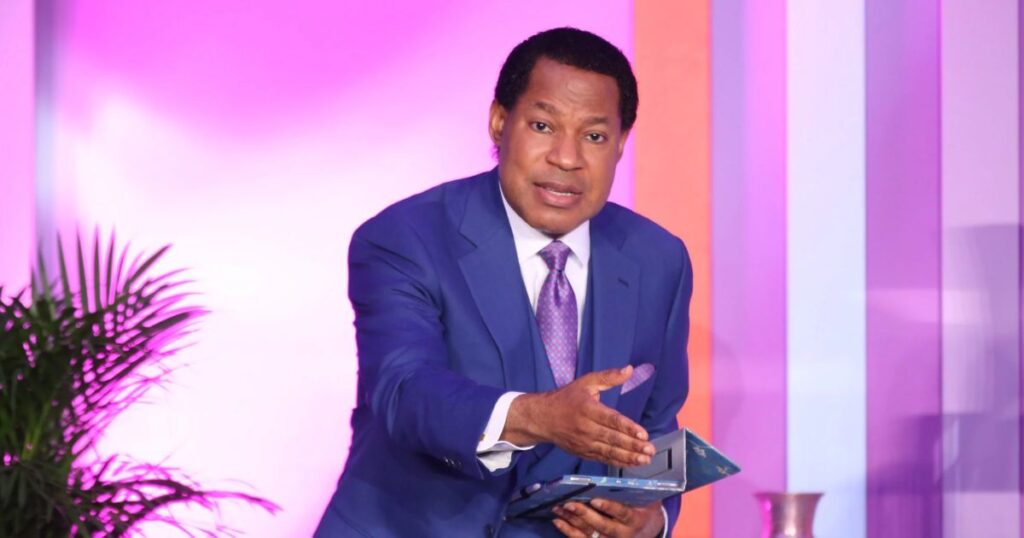Ever found yourself checking out the latest church drama? Yeah, we’ve all been there. Seems like every other week, there’s a new “Pastor Chris Hodges Scandal” making headlines.
But this one? It’s a doozy. Grab a coffee and let’s dig into the juicy inside story behind Pastor Hodges’ fall from grace and that apology that set tongues wagging.
Get ready to go behind the scenes of this explosive saga that rocked one of America’s biggest megachurches to its very core. We’re talking broken trust, bitter feuds, and tough lessons learned the hard way about ethical leadership.
It’s juicy, it’s messy, and it’s a wild ride you won’t want to miss. Let’s dive in!
Unveiling the Scandal of Pastor Chris Hodges
Okay, so what exactly went down with our guy Chris Hodges? Brace yourself, because this “spiritual guidance” took a seriously shady turn.
Hodges was the big cheese at Church of the Highlands – one of those booming megachurches with congregational growth through the roof. Dude had clout and folks looked up to him as a leader in the community.
Then, out of nowhere, whispers of a scandal started rippling through the congregation. At first, it was just rumors, but details soon emerged that rocked this church to its core.
The Complexity of Scandal
Here’s the thing about scandals involving religious leaders – they cut deep. We put these folks on a pedestal, expecting them to embody morality and model ethical behavior.
So when a leader like Hodges gets caught with his hand in the cookie jar, it’s a betrayal of the highest order. Cue mass disillusionment, broken trust, and enough drama to fuel a Netflix docu-series.
The Public’s Reaction
As soon as word got out, the reactions flooded in from all corners. Church members? Devastated and demanding answers. The wider community? A mix of shock, concern, and more than a few “I told you so” sneers.
Social media became a battlefield, with people picking sides and dissecting every juicy morsel about this sordid tale. Some folks jumped straight to defending Hodges, while others waved the “accountability” flag from the get-go.
The Call for Accountability
And that’s when the gloves really came off. This scandal put the spotlight on just how crucial transparency and accountability are, especially for leaders meant to guide us spiritually.
There were growing calls for the Church’s admin to step up and address the issue head-on. No more shady backroom dealings or sweeping things under the rug. This was a line in the sand moment.
People wanted to know what actions were being taken to tackle the root of the problem and prevent future ethical missteps from rocking the boat again.
The Journey of Forgiveness and Restoration
Of course, forgiveness is kind of a big deal in the Christian faith. So even as Hodges’ actions left many feeling betrayed, talks soon turned to the path towards personal growth, redemption and restoration.
Could the congregation find it in their hearts to forgive this fallen leader and welcome him back into the flock? And what did that process of reconciliation and healing even look like for such a fracture in the church’s moral foundation?
Where Ethical Lines Are Drawn

Buckle up, because this mess cracked open a huge can of worms about the ethical obligations of religious leadership.
Defining Ethical Leadership
We’re talking the real nitty-gritty of what it means to be an ethical leader when you’re guiding a flock of faithful followers.
It goes way beyond just preaching values from the pulpit. We expect these leaders to walk the walk, stay humble enough to own their mistakes, and consistently model integrity.
How they handle their stumbles is a massive test of character and commitment to their spiritual duties.
Consequences of Ethical Missteps
And Hodges’ scandal was a glaring example of what happens when religious leaders cross those ethical lines in the sand.
Cue shattered trust, shaken faith, and irreparable damage to the church’s moral fabric.
The aftershocks even rippled out beyond Hodges’ church, tainting how people view religious institutions in general.
When you sign up to be a high-profile spiritual leader, the stakes are that high. One wrong move and you risk becoming a cautionary tale of how not to lead.
Pathways to Restoration
That said, there are potential pathways back from the abyss – if you’re willing to do the hard work of true restoration.
We’re talking a sincere, no-BS apology backed by personal accountability and real, tangible change. There need to be transparent steps to address the root issue, regain broken trust, and reassure people it won’t happen again.
It’s not an easy or quick process by any stretch of the imagination. But done right, it can ultimately fortify the ethics and values the community was built upon.
The Apology
Which brings us to the make-or-break moment: Hodges’ public apology.
All eyes were on him as he stepped up to the mic, feeling the weight of that momentous task. Would he knock it out of the park with humility and authenticity? Or flub it in spectacular fashion?
His words were carefully measured yet seemed to stem from a place of remorse over the situation’s fallout. He owned responsibility for the actions that ricocheted through his church.
Overview: Church of The Highlands Exposed

Of course, Hodges’ scandal put his entire church under a scorching spotlight too.
Initial Reactions and Immediate Impact
For the average churchgoer at Highlands, this was nothing short of a crisis moment.
Some were stunned into disbelief, their faith rocked to the core. Others were outright livid, questioning how this could happen under the leadership’s watch.
Beyond the pews, the wider community suddenly viewed this church through a very different lens. What was once a beacon of hope and inspiration was now mired in controversy.
The aftershocks rattled Church of the Highlands to its very foundations.
Leadership Response and Actions Taken
With a rapidly unfolding PR nightmare on their hands, the church leadership had to act decisively to get ahead of the crisis.
Their response in the crucial early stages would set the tone for what was to come – placating platitudes or committed substantive action?
In the end, they opted for the latter, laying out the first steps they’d take to re-solidify accountability and regain congregational trust.
It was damage control mode for sure, but their words hinted at an understanding of this moment’s gravity.
Long-Term Implications for Church and Community
But the real long-term impacts were yet to unfold both for the church’s internal dynamics and its standing in the broader community.
Internally, it faced an uphill battle to rebuild that all-important bond of trust between the leadership and its members. Could the new measures be enough to restore faith in the church’s moral compass?
Then there were the external optics to grapple with. How would this scandal shape perceptions of Highlands within the wider landscape of Christian organizations?
Its reputation and future trajectory within the community were now anything but certain.
The Church’s Reaction and Hodges’ Apology
The Church’s Official Statement
Not long after Hodges’ mea culpa, the church itself issued an official statement addressing the elephant in the room.
On paper, it checked all the right boxes – recommendations on rebuilding trust, commitments to new ethical safeguards, and doubling down on transparency.
The church reaffirmed its mission to promote love, integrity, and the very values now being called into question. It was a bold stance, but one that rang somewhat hollow without concrete actions to back it up.
Hodges’ Public Apology
Then it was Hodges’ turn once more, taking the stage for his big public apology.
You could feel the tension as he unequivocally acknowledged the deep impact his actions had on the congregation. He seemed to get the magnitude, expressing remorse and vowing to embark on a journey of personal growth.
For his part, Hodges hit the right notes and threw the accountability ball into the church’s court.
But would his words be enough to sway the disenchanted masses?
The Congregation’s Response
Predictably, the reactions among Highlands’ members ran the full gamut.
The Hodges faithful felt his words rang true and were ready to welcome him back into the fold with open arms. To them, this was a temporary stumble on the path to redemption.
Then there were those firmly in the “actions speak louder than words” camp. They needed to see substantive change and accountability before regaining any trust.
Moving Forward
With Hodges’ apology and the church’s statement out in the open, it was time to put their promises into practice.
Several key measures were quickly rolled out to bolster governance and inject more accountability into leadership decisions. Enhanced oversight, checks and balances, and a push for more inclusive processes aimed to prevent history from repeating.
It was a solid start in theory, though only time would tell if these were more than just empty gestures. Regaining that all-important congregational trust wouldn’t be achieved through policy changes alone.
Read Also: Lawsuit points finger at Church of the Highlands pastors
Lessons Learned

If nothing else, the Pastor Chris Hodges scandal served up one doozy of a masterclass on the pitfalls of unchecked power.
The implosion at Church of the Highlands underscored why transparency and ethical leadership need to be more than just lofty ideals. They’re non-negotiable foundations for any community built on faith and trust.
It also put accountability front and center as a make-or-break factor for religious institutions moving forward. The old “ask for forgiveness, not permission” mentality was officially canceled.
Maybe most importantly, the saga reminded us all that leaders are human. They’ll stumble and disappoint – it’s how they own up to it that truly defines them.
The Broader Implications for the Christian Community
But the tremors of this scandal radiated far beyond the walls of Hodges’ church, sending shockwaves through the broader Christian community.
Ethical Leadership and Accountability
Suddenly, people were taking a harder look at the ethical obligations of their own spiritual leaders and how to enforce them.
What checks and balances should be in place? How do you strike that tricky balance between accountability and spiritual guidance? The burning-hot spotlight was now on institutions across the board to get their governance houses in order.
Healing and Reconciliation Processes
At the same time, the Hodges controversy was a stark reminder that churches need robust processes for healing and reconciliation when leaders fall short.
Creating safe spaces for open dialogue, airing grievances, and mapping out a path forward became a gospel truth of sorts. How can faith communities rebuild that all-important foundation of trust when it’s been shattered?
Impact on Interfaith and Ecumenical Relations
The scandal’s ripples even extended into the realm of cross-faith relations and ecumenical cooperation.
You had people from various religious traditions weighing in on the shared values of transparency and accountability that transcend any single belief system. What could communities learn from one another when the planet’s holiest humans disappoint?
It was a moment ripe for inter-faith dialogue and collaboration in the name of upholding the highest moral standards.
Moving Forward
Rebuilding Trust Through Action
Of course, talk is cheap – especially when you’ve been accused of eroding the very thing you’re preaching about.
For Hodges and Church of the Highlands, there was now a long road ahead to walk the walk and actively rebuild shattered trust.
Concrete actions like regular transparency reports, robust ethical training for leaders, and ramping up community engagement would be crucial first steps. Lofty promises alone wouldn’t cut it. People wanted to see accountability in action.
Strengthening Community Bonds
Beyond the institution itself, a major focus moving forward had to be strengthening the resilient community fabric that holds it all together.
You can be sure church leadership was exploring ways to foster more open communication, mutual support, and deeper connections among members. From small group meetups to acts of service, bridging those gaps was pivotal.
Because at the end of the day, a church community is only as strong as the bonds that bind it. It was time to fortify that foundation from the inside out.
Innovation in Spiritual Leadership
Butthis scandal also catalyzed an important conversation about how spiritual leadership itself needs to evolve for the modern era.
How can church guidance stay grounded in age-old teachings while adapting to face contemporary challenges around ethics and transparency? An innovative, forward-looking vision was needed to lead these centuries-old institutions into the future.
For many, it was a wakeup call that the old “obey and don’t question” paradigms were dated at best and toxic at worst. The next generation of spiritual leaders would need to update their playbooks.
Future Directions

Strengthening Community Bonds
Okay, let’s look ahead at how Church of the Highlands planned to apply those hard-learned lessons and steer itself in a new direction.
Priority number one was shoring up the church’s bedrock – creating a stronger, more deeply bonded community from the inside out.
That meant rolling out initiatives to encourage more open dialogue, safely sharing thoughts and concerns, and truly listening to the voices of its members.
From ramping up small group activities to expanding service-oriented programs, the goal was to foster real human-to-human connections.
Because at its core, a congregation needs to feel that sense of unity, love, and common purpose driving everything else forward.
Enhancing Education and Awareness
But having a tight-knit community isn’t enough on its own. There was also a big push to enhance education around ethical leadership at all levels.
We’re talking seminars and workshops to dive deep into those biblical principles of integrity, transparency, and what forgiveness and reconciliation truly mean.
It was about equipping the entire congregation with the mindset and frameworks to uphold the community’s moral foundations – not just a chosen few at the top.
Because lord knows, ethical leadership needs to be an ethos baked into every fiber, not just lip service paid by those in charge.
Expanding Outreach and Service
Of course, talk is cheap if it’s not backed by tangible action out there in the real world too.
So Church of the Highlands was also pivoting hard towards expanding its outreach efforts and service projects in the broader community.
From pitching in at soup kitchens to neighborhood revitalization programs, it was a way to put their values into practice through meaningful deeds.
Not only would it provide vital support and assistance, but it gave congregation members a chance to connect over shared purpose.
Investing in Youth and Future Leaders
Finally, one of the biggest focus areas was nurturing and developing the next generation of spiritual leaders to help guide the institution into the future.
That meant doubling down on youth mentorship, leadership training programs, and immersive experiences to inspire young people.
The goal? To instill a strong ethical foundation and equip these future leaders with the tools to uphold moral integrity while fearlessly forging new paths.
Because those shaping the communities of tomorrow would need to build upon lessons learned while bringing bold, innovative visions to life.
Was it an ambitious checklist of future plans? You betcha. But for an institution shell-shocked by scandal, it signaled a steadfast commitment to reemerging stronger, wiser, and grounded in its ethics and community purpose.
Only time would tell if Church of the Highlands could walk that long, winding road to redemption. But for now, it was putting one foot in front of the other on the path forward.
The Role of Social Media and Public Scrutiny
No modern scandal is complete without the intense glare of social media and the court of public opinion weighing in. The Hodges controversy was no exception.
Navigating the Minefield of Online Discourse
As salacious details trickled out, Facebook, Twitter, and other platforms became virtual battlegrounds for heated debates. Blind allegations and scorching takes flew back and forth with reckless abandon.
For Hodges and church leadership, it was a crash course in crisis communications for the digital age. Every statement, every syllable uttered was dissected under a microscope.
Missteps and inflamed responses could instantly go viral, pouring gas on an already raging PR wildfire. Deft navigation of this minefield became pivotal for maintaining any semblance of control over the narrative.
The Double-Edged Sword of Transparency
At the same time, social media amplified growing calls for complete transparency from the church. The cloak of secrecy typically afforded to institutions was obliterated.
Every perceived attempt to obfuscate or bury the truth was immediately outed and pilloried in full public view. There was nowhere for Church of the Highlands to hide.
But that unrelenting scrutiny was a double-edged sword. Yes, it held Hodges’ feet to the fire and ensured accountability. But it also threatened to derail the healing process if the online fervor spiraled out of control.
The Tarnished Legacy of a Larger-Than-Life Figure

Throughout the saga, one inescapable factor loomed large: Pastor Chris Hodges’ own looming presence and polarizing impact.
The Cult of Personality Phenomenon
Let’s face it – Hodges was a bonafide celebrity figure for the modern evangelical movement. With his magnetic persona and remarkable congregational growth, he’d amassed a cult-like following among the faithful.
To his ardent supporters, he was a spiritual juggernaut who could do no wrong. That deification made his fall from grace all the more unthinkable and the betrayal cut that much deeper.
The vehement defenses of Hodges demonstrated the intoxicating hold he held over many. It was akin to watching a revered world leader disgraced, sending shockwaves through their loyal ranks.
Reputational Fallout on a Grand Scale
Of course, with that meteoric rise came an equally grand reputational plummet when the curtain was pulled back. Suddenly, the sincerity of Hodges’ teachings and the pristine persona he’d crafted were cast in doubt.
His “personal growth” redemption narrative felt oddly transactional to some – more about spinning salvation than genuine accountability. The tarnished legacy was inescapable, looming over any authentic reconciliation efforts.
It became a brutal case study in the perils of undying allegiance to a singular personality instead of the institutions and ideals themselves. For Church of the Highlands, there would be no putting that genie back in the bottle after this self-inflicted PR disaster.
The Opportunity to Redefine Ethical Leadership
Yet within that upheaval was a silver lining too – the rare opportunity to completely redefine what ethical spiritual leadership looks like in a modern context. And shed the antiquated “preacher as deity” mentality once and for all.
Hodges may have tripped on his cape, but the greater mission was to ensure no personality cult could run unchecked again. A structural realignment putting safeguards and checks on concentrated power was sorely needed.
If the church could harness this moment to build a new model of humble, shared, and radically transparent leadership, perhaps some good could yet emerge from the ashes of Hodges’ hubris. It was an uphill journey, but one that necessitated reckoning with the perils of unchecked hero worship.
Read More:
A Legend: Ted Parker Obituary Lumberton NC
Openhouseperth.net Lawyer A Complete Legal Reference 2024
FAQ’s
Where is Pastor Chris Hodges now?
Pastor Chris Hodges is still leading Church of the Highlands. He did not resign after the scandal. He apologized and the church implemented reforms.
What happened to Pastor Chris Hodges son David?
Chris Hodges’ son David passed away tragically in 2015. He was a student pastor at Church of the Highlands. His death was a devastating loss.
What is the background of Chris Hodges?
Chris Hodges co-founded Church of the Highlands in 2001. Before that, he was a traveling minister. He’s from Alabama originally.
Who is Chris Hodges’s wife?
Chris Hodges is married to Tammy Hodges. They have been married for over 30 years. Tammy is also involved with Church of the Highlands.
Final Words
The Pastor Chris Hodges scandal sent shockwaves through the Christian community. As a famous megachurch leader, Hodges’ fall from grace was a brutal betrayal of trust. Reactions ranged from disbelief to fury as details of his misdeeds emerged.
The church tried to get ahead of the PR nightmare with apologies and promises of reform. But it was an uphill battle to rebuild that sacred bond with the congregation. Tough lessons were learned about ethical leadership, accountability, and the perils of unchecked power.
In the aftermath, Hodges and the church had to find innovative ways to regain credibility. From educating the next generation of leaders to strengthening community outreach, it was a long road to redemption.

With a wealth of expertise spanning 6 years, I am a seasoned author in the realm of courier services information. My insights illuminate the intricacies of logistics and delivery solutions.











